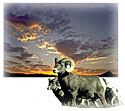Best Books of 2006
By Ron Watters
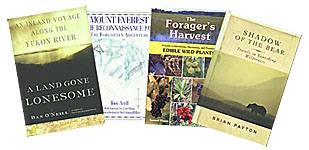
Best Books of 2006
Winners of the National Outdoor Book Awards and the following . . .
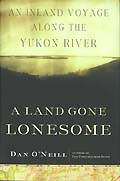 A Land Gone Lonesome: An Inland Voyage along the Yukon River. By Dan O'Neill. Counterpoint, New York ISBN 1582433445
A Land Gone Lonesome: An Inland Voyage along the Yukon River. By Dan O'Neill. Counterpoint, New York ISBN 1582433445
This is one of the finest books of the year, a high caliber work, outstanding in every way. Alaskan Dan O'Neill takes his canoe down the Yukon from Dawson, of Klondike gold rush fame, to Circle City where according O'Neil "the channels of the Yukon spraddle like a fat women's legs released from their stockings." It's a lengthy and reflective journey from present to past and back to present. Along the way, O'Neill stops to chat with the river's few scattered residents, many of whom he knows. He visits cabins, kicks around in old prospects, and looks in the brush for the remains of old homesteads.
As he moves down river, an engrossing story emerges of men and women attempting to eek out a living in the Alaskan wilderness. Some make it. Some don't, such as a young man known only as Smeagol. He froze to death one winter in a small, windowless cabin ten miles up the Kandik, a tributary of the Yukon. He was found in the spring, but since the ground was still frozen, he couldn't be buried and his body was laid outside the cabin. When Smeagol was checked upon later that summer, he was gone, courtesy of a resident pack of wolves. Nothing remained of him: not a bone, not a scrap.
If you think about it, it's a nice way of going -- when you're ready for it, of course. There's no mess to clean up. You don't take up space in a city cemetery. You help fed some hungry members of the local community, which is far better than being stored away in a box where you do no good. And it doesn't cost a thing.
Years ago, I had spent a little time in this country, quite happily managing to escape Smeagol's fate. I had kayaked a portion of the Yukon downsteam from Dawson and had run the Forty Mile, the South and main Tatonduk Rivers, which are mentioned in O'Neil's account. I wish that O'Neil's book had been available back then. My journey would have been far richer.
Much of the area through which O'Neil travels is the Yukon-Charley Rivers National Preserve, a part of the National Park System. The Preserve's enabling legislation made allowance for the subsistence lifestyle to continue within its boundaries. It created, essentially, the last place in the U.S. where a limited number of homesteaders could live on and with the land. But what O'Neill reveals in A Land Gone Lonesome is that just the opposite has occurred. Park Service bureaucracy has gradually push homesteaders off the land and prevented new comers from taking their place.
O'Neil's book is an eloquent plea to preserve both the Alaskan wilderness and its back-to-the-land lifestyle. The book is uncommonly well written, imbued with understated humor and passion. It's a story that needs to be told, and O'Neil was the right person to do it.
Amazon.com: More Information or Purchase
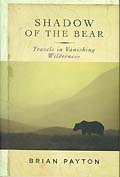 Shadow of the Bear: Travels in Vanishing Wilderness. By Brian Payton. Penguin Group (Canada), Toronto. ISBN 1596911980
Shadow of the Bear: Travels in Vanishing Wilderness. By Brian Payton. Penguin Group (Canada), Toronto. ISBN 1596911980
"My journey began with a dream," Brian Payton tells us early in Shadow of the Bear. In his dream, he comes across a bear sitting on a log, wearing tattered overalls, trying to read from a book. Quite naturally Payton sits down with the bear and begins to teach it how to read.
The dream effectively frames and gives purpose to his book. Payton takes us on not one but several journeys, introducing us to individuals he meets along the way, and using artfully crafted stories, he teaches us, his readers, about the bears of the world.
Payton explains up front that he had much to learn -- starting with the basics, like how many species of bear are found in the world. He knew something about grizzly, black and polar bears which are familiar to North Americans. China's beloved giant panda bear, of course, was on his mental list, as well as Russia's brown bear, but, he learned that there are more.
In fact, eight species of bears inhabit the world, and the nosy and prying Payton sets out on a succession of trips to find and learn about each one. His trips take him to India, Peru, Cambodia, Italy, France, Manitoba and the Colorado Plateau.
This is not a scientific book written in stiff prose and filled with facts and figures. The basic scientific information is there, of course, but the book is best described as a non-fictional novel. There is movement from beginning to end, interesting supporting characters, just the right amount of dialog, and even something of a resolution upon the book's completion.
Payton is an unusually good story teller. He has a light touch, and except on occasion, most particularly when it comes to hunting bears, he doesn't interject himself too forcefully in the narrative. You'll find him quietly sitting down with you on that log in the forest, and in a short while, you'll be caught up and learning about the world's bears in the most engaging way.
Amazon.com: More Information or Purchase
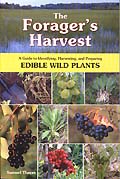 The Forager's Harvest: A Guide to Identifying, Harvesting and Preparing Edible Wild Plants. By Samuel Thayer. Forager Harvest, Ogema, WI. ISBN 0976626608
The Forager's Harvest: A Guide to Identifying, Harvesting and Preparing Edible Wild Plants. By Samuel Thayer. Forager Harvest, Ogema, WI. ISBN 0976626608
There are a lot of bad books out there on edible plants. Most of their deficiencies can be traced to one very fundamental problem: the author hasn't eaten the plant he claims to be edible.
To find reliable work in edible plants, one nearly has to go back to Euell Gibbon's books (Stalking the Wild Asparagus and others) which came out in the sixties and seventies. Gibbons painstakingly tried all of the wild foods that he included in his books, and consequently, his work is dependable. Not so with many books since. Trying to capitalize on Gibbons' popularity and writing success, various publishers, big and small, put out a secession of edible plant books, almost all of them marred with inaccuracies. While there have been a couple of reliable books published since, the literature on a whole is altogether on the discouraging side.
That's why Samuel Thayer's new book The Forager Harvest is so welcomed. What sets it apart is Thayer's clear experience in the field. He has eaten every plant in his book, not once or twice, but at least 50 times. The plants aren't glossed over. Each is described in detail. The color photos which supplement the descriptive material are clear and instructive. In addition to identification characteristics, he describes when the plant is ready for human consumption, and how to harvest and prepare it.
Everything about the book has the stamp of authority. Thayer knows his subject and he knows it well. The book is a self-published volume which can immediately raise a red flag. Such books often lack the discipline of a strong and objective editor who cuts through extraneous material and keeps the author's fancies in check. Too, self published books often lag in the lay-out and design departments.
But none of those faults are present in The Forager's Harvest. On the contrary, it is very attractively designed. The writing is excellent and well edited. In fact, by going the self publishing route, Thayer's end product is far better than if he had turned it over to big-city publishers who are often bent on economy over substance. There is plenty of substance here, and no fluff. All thumbs up. The Forager's Harvest is a first-rate guidebook.
Amazon.com: More Information or Purchase
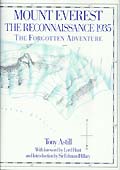 Mount Everest: The Reconnaissance 1935, The Forgotten Adventure. By Tony Astill. Les Alpes Livres, Southampton. ISBN 0954920104
Mount Everest: The Reconnaissance 1935, The Forgotten Adventure. By Tony Astill. Les Alpes Livres, Southampton. ISBN 0954920104
This book gets the nod for the best comprehensive outdoor historical work published this year.
Using journals and letters, Tony Astill reconstructs the 1935 British expedition to the Everest and nearby environs. The expedition was led by the indomitable Eric Shipton, one of the great mountain explorers of the Twentieth Century. This was Shipton's second trip to Everest. He would return to the mountain three more times. In his final attempt in 1951, he discovered the route which, two years later, would be utilized for the successful first ascent of the mountain by Sir Edmund Hillary and Tenzing Norgay.
Interestingly enough, it was Shipton who during the 1935 expedition gave Everest summiter Norgay his first climbing job. In addition, to launching Norgay's career, the 1935 Expedition was critically important to mountaineers' understanding of the Everest region. No one really knew, for example, when were the best times to climb in the Himalaya. In 1935, Shipton was climbing during the monsoon, and his experiences put to rest any ideas that the monsoon held any advantage. He quickly deduced that the problems created by deep and unstable snow could be minimized by climbing during pre winter or pre-monsoon seasons.
While the expedition was not successful in climbing as high as previous attempts on Everest, it did climb many nearby peaks. In fact, it was one of the most profligate climbing expeditions to the Himalaya ever. Twenty-four first ascents were made of peaks over 20,000 feet in elevation.
With all its importance, you would expect that much has been written about the 1935 expedition. Actually, very little has, and no books have ever been published. With Astill's book that deficiency has been corrected. Mount Everest: The Reconnaissance 1935 is not a fast-paced, edge-of-the-seat read. Rather, the book is more scholarly in composition, carrying on a running narrative with frequent uses of long quotes from diaries or letters of the expedition members.
Astill's book is a gallant effort, clearly a labor of love and an important addition to mountaineering literature.
Available Directly from the Author. Contact him at astill.tony@googlemail.com / Website: www.les-alpes-livres.com
Others that have come across our desk . . .
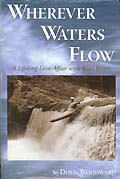 Wherever Waters Flow: A Lifelong Love Affair with Wild Rivers By Doug Woodward. Headwaters Publishing, Franklin, NC ISBN 0977931404
Wherever Waters Flow: A Lifelong Love Affair with Wild Rivers By Doug Woodward. Headwaters Publishing, Franklin, NC ISBN 0977931404
This year's pick for a whitewater book is Doug Woodward's Wherever the Waters Flow. For many years, Woodward has been an important influence in southeastern boating. He introduced former president Jimmy Carter to kayaking. He helped with the stunt work for the film Deliverance. There's a relaxing, down home feel to this book -- and plenty of warmth.
Woodward spent a good portion of his life turning kids onto kayaking and he has some great stories to tell. One is a rollicking Colorado River adventure with a group of scouts and an old broken-down school bus. Included also among his reminiscences are adventures with his own children, and you'll love their names: Cricket, David, Autumn, Forest, Rivers and Canyon. Summed up: it's a big-hearted, doggone good book.
Available Directly from the Author's Website: Wherever Waters Flow
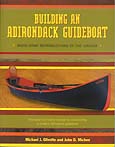 Building an Adirondack Guideboat By Michael J. Olivette and John Michne. Nicholas K. Burns Publishing, Utica, NY ISBN 0971306990.
Building an Adirondack Guideboat By Michael J. Olivette and John Michne. Nicholas K. Burns Publishing, Utica, NY ISBN 0971306990.
The Adirondack guideboat is the BMW of row boats. When you see one of these elegant boats gliding effortlessly across the water, you'll get a lump in your throat. Made of wood, they have sensuous lines, curving gracefully from the midsection to an upturned and pointed bow and stern. It looks very much like a canoe but it's propelled by oars. If you want the coolest looking boat on the lake, and you enjoy woodworking, this is the book for you: a step-by-step guide on how to build these beautiful boats.
Amazon.com: More Information or Purchase
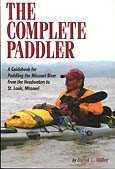 The Complete Paddler: A Guidebook for Paddling the Missouri River from the Headwaters to St. Louis, Missouri By David Miller. Farcountry Press, Helena, MT. ISBN 1560373253.
The Complete Paddler: A Guidebook for Paddling the Missouri River from the Headwaters to St. Louis, Missouri By David Miller. Farcountry Press, Helena, MT. ISBN 1560373253.
If you're retracing the Lewis & Clark trail -- or if you have a hankering to paddle the Missouri -- you'll want a copy of David Miller's Complete Paddler. Miller teaches map making, and you can rely on his maps and GPS coordinates to keep you oriented. All the important pieces are there: mileages, camps, portage routes, and helpful tidbits. It's the Missouri River's paddling bible.
Amazon.com: More Information or Purchase
Links to the Best Books of Other Years: See List

 Best of the Year Reviews
Best of the Year Reviews